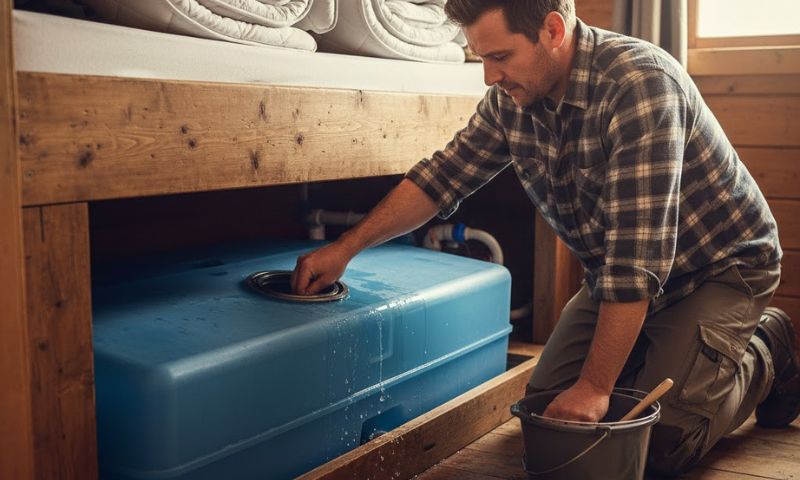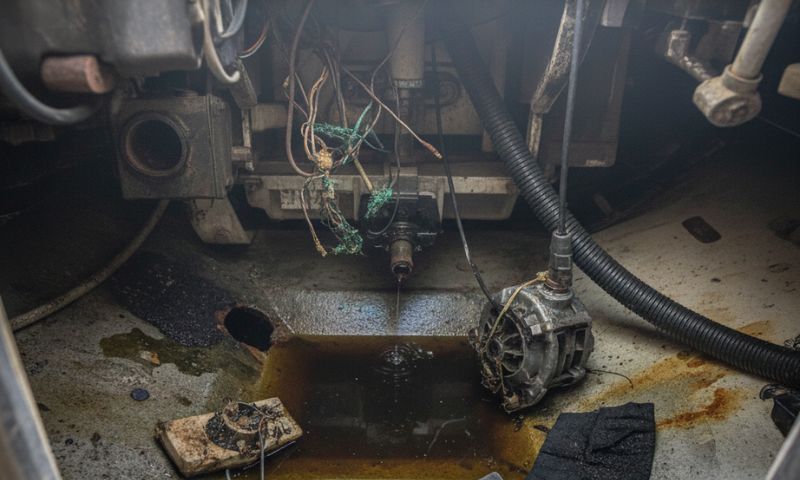A dependable supply of good-tasting water is one of the quiet luxuries of life under sail. Yet tanks live in the dark and warm corners of a hull—ideal conditions for biofilm, odors, and scale to take hold. Thoughtful freshwater tank cleaning keeps your potable system safe, your crew happier, and your pumps and fixtures working as designed. This guide walks through when and how to clean, which products to trust aboard, and the simple habits that extend the time between deep scrubs.
Why Freshwater Tank Cleaning Matters at Sea
Potable water systems on sailboats face unique stress: long storage times, temperature swings, and constant motion that stirs sediment. Without regular freshwater tank cleaning, biofilm can coat tank walls, filters clog prematurely, and a low-grade musty taste creeps into every cup. Hygiene is the headline, but performance matters too—clean tanks protect pumps, heaters, and mixers from debris and scale, reducing energy draw and extending service life on passage.
How Often Should You Clean a Sailboat’s Freshwater Tank?
Frequency depends on cruising style and storage conditions. As a baseline, plan a full clean and sanitize at least every six months for active cruising, and immediately after winter lay-up or any period of disuse. In tropical climates or when water sits aboard for weeks, move to a quarterly routine. Any persistent off-odor, discoloration, or slimy feel inside fill hoses is a signal to clean now rather than later. After a known contamination event (questionable dock water, diesel smell, or algae), treat the system as if it were new and start fresh.
Prepare the System: Valves, Bypasses, and Safety
Before you reach for chemicals, set the stage. Isolate tank outlets, bypass watermakers and carbon filters (sanitizers ruin them), and confirm that pressure pumps can circulate solution to every branch. Choose a calm day alongside or at anchor away from swimmers, and plan where you’ll safely dispose of rinse water—never straight into a marina.
What you’ll need aboard
- Food-grade cleaning agents (a purpose-made marine tank cleaner and a sanitizer such as unscented household bleach 5–6% or a marine-approved alternative), soft brushes, and a long-handled mop head reserved for potable work
- Replacement cartridges (sediment and carbon), spare O-rings, hose clamps, and a dedicated potable-water hose/nozzle for filling and final rinse
Step-by-Step: Empty, Wash, Sanitize, Flush
Start by draining tanks as low as the pickup allows. Open inspection ports and, if access permits, wipe interior surfaces to break biofilm—use a soft pad to avoid scratching plastic or lacquered coatings. If scale is visible on stainless or plastic tanks, a manufacturer-approved descaler helps; always rinse thoroughly after descaling.
Next, sanitize. Many skippers use a free-chlorine solution for a short, controlled contact time to reach all lines and fixtures. As a rule of thumb for 5–6% unscented bleach, aim for roughly 50–100 ppm free chlorine in the tank (consult your tank and product guidance, and limit contact time on metal tanks). Fill with fresh water, circulate to every tap until you smell chlorine, then hold for the recommended period. Finally, drain completely and flush with two full tank volumes, opening each tap until the odor is gone. Refit or un-bypass carbon filters only after the final rinse so they’re not sacrificed during sanitizing.
Choosing the Right Products for Marine Use
Not every household cleaner belongs aboard. For the cleaning phase, look for biodegradable, non-foaming products labeled for potable systems. For sanitizing, stick to marine-approved solutions: unscented household bleach (5–6% sodium hypochlorite), chlorine-dioxide tablets, or peracetic-acid/peroxide blends formulated for drinking-water systems. Each has pros and cons—bleach is effective and inexpensive; chlorine dioxide tackles biofilm; peroxide blends leave little taste. Match the chemistry to your tank material: use conservative doses and short contact times with aluminum or mixed-metal systems, and never mix chemicals or use scented/thickened bleaches. Always follow the product label over any generic advice.
Recommissioning After Cleaning: Filters, Taste, and Testing
Once tanks are flushed, replace sediment and carbon filters and purge lines again to clear carbon fines. If a faint “pool” note lingers, one more partial fill and run through the galley tap usually resolves it. Handheld test strips for free chlorine can confirm that sanitizer has been rinsed out before you sail. Log the date, products used, and any observations—your future self will thank you when planning the next freshwater tank cleaning.
Troubleshooting Odors, Biofilm, and Cloudy Water
A sulfur or “rotten-egg” smell often points to bacterial byproducts thriving in stagnant, oxygen-poor pockets; a full sanitize with thorough circulation typically clears it. A sweet, plastic note usually traces to old hoses or warm water sitting in sun-lit runs—insulate or reroute where possible and renew hoses to potable-grade. Persistent haze or fine grit suggests tank sediment; plan a mechanical wipe of tank floors and check that pickups are a few millimeters off the bottom to avoid vacuuming sludge into the system.
Underway Habits That Keep Tanks Clean Longer
Daily habits stretch the time between deep cleans. Fill from trusted sources, flush dock hoses before connecting, and keep tank vents screened to block insects and spray. Avoid leaving tanks half full for weeks; either top up or drain and air them. If you carry jerrycans, treat and rotate them with the same discipline as the main tanks.
Easy habits for healthier tanks
- Dedicate a labeled, food-grade fill hose and cap both ends when stored; never drag it through dock water
- Replace carbon filters on schedule, and bypass them when shock-sanitizing to avoid destroying fresh media
Safety, Environmental, and System-Compatibility Notes
On boats with watermakers, isolate the RO system completely—chlorine ruins membranes. Keep sanitizing contact times short on metallic tanks and fittings, and rinse generously. Dispose of chlorinated rinse water responsibly and away from densely populated swimming areas. If anyone aboard has sensitivities, choose low-residue sanitizers and verify neutralization with test strips before the first brew or shower.
How This Fits Into Seasonal Maintenance
Treat freshwater tank cleaning as part of seasonal commissioning and de-commissioning. After winter storage, you’ll remove antifreeze residue, re-seal inspection ports, and start the cruising season with confidence. Before lay-up, a clean, dry system resists mold and makes spring recommissioning faster and safer.




Leave a comment
This site is protected by hCaptcha and the hCaptcha Privacy Policy and Terms of Service apply.